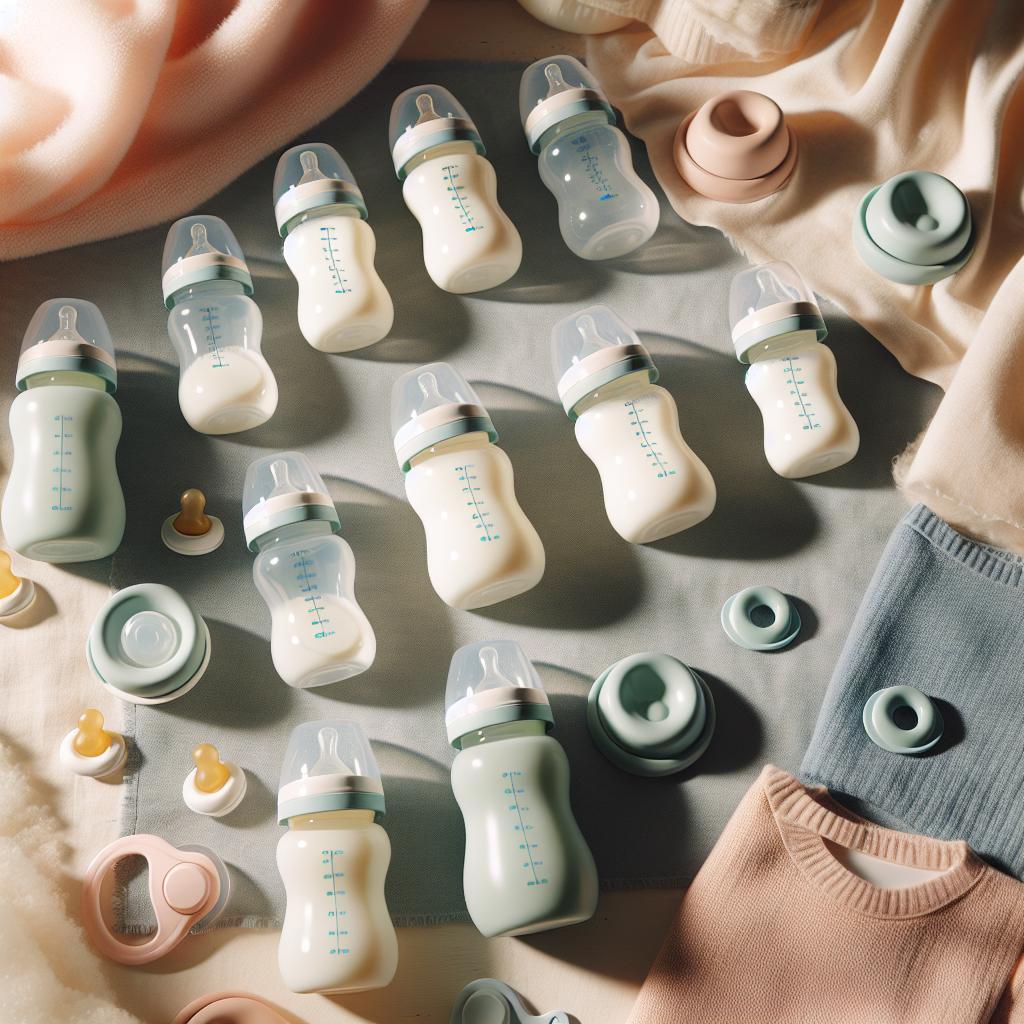Understanding the Importance of a Nurturing Bottle Feeding Experience
The journey of parenting is filled with countless decisions and choices parents have to make for their babies. One of the most crucial decisions revolves around feeding. While breastfeeding is often the default choice for many, several families may opt for, or have to rely on, bottle feeding for a variety of reasons. Creating a nurturing bottle feeding experience for your child is equally valuable and can foster a strong bond between parents and their little ones.
Why is a Nurturing Bottle Feeding Experience Essential?
Feeding time is so much more than just a process of satiating your little one’s hunger. It’s a warm, caring feeding process that deeply contributes to the emotional bond between parents and their newborn. Let’s delve into the reasons why a nurturing bottle feeding experience is so crucial:
- Bonding: A baby associates the feeling of comfort and security with their feeding time. When bottle feeding is done in a caring, relaxed manner, it can help create a deep bond between the parent and the baby.
- Healthy Eating Habits: A nurturing bottle feeding experience can help babies gradually develop a healthy relationship with food. It allows them to identify and respond to their hunger and fullness cues effectively.
- Emotional Security: When a baby sees their primary caregivers during feeding times, they associate the process with being loved and cared for. It builds a foundation of trust and emotional security.
In a nutshell, a nurturing feed goes beyond nutrition. It contributes to the emotional and psychological development of the baby. Researchers have extensively studied this, shedding light on how bottle feeding can actually be as bonding as breastfeeding. You can delve into some of these studies here and here.
Creating a Nurturing Bottle Feeding Atmosphere
So how can parents create a nurturing bottle feeding experience? Here are some practical tips:
- Comfortable Setting: Choose a calm, serene place for feeding your baby. A cozy corner in your baby’s room or a comfortable couch works well.
- Skin-to-Skin Contact: Just like breastfeeding, skin-to-skin contact can immensely benefit bottle-feeding sessions. It helps the baby feel secure and enhances the bonding experience.
- Eye Contact: Maintain eye contact with your baby during feedings. This engagement is reassuring for your little one and strengthens the parent-baby connection.
- Respond to Cues: Learn to read your baby’s hunger and fullness cues. Responding appropriately ensures that your baby is neither overfed nor underfed.
For more detailed tips on creating a fuss-free bottle-feeding experience, check out our article here.
Busting the Myths
It’s important to clarify certain common misconceptions that parents may have about bottle feeding:
- Myth: “Bottle feeding does not allow parents to bond with their baby as effectively as breastfeeding.”
Fact: The bonding experience is more about the quality of feeding times than the method of feeding. A nurturing bottle feeding routine can foster equally strong bonds. Read more about this on Healthline. - Myth: “Bottle feeding is easier and requires less effort than breastfeeding.”
Fact: Both methods have their own set of challenges and responsibilities. Bottle feeding needs proper preparation of formula, sterilization of bottles, and understanding the right feeding techniques.
For more on how to smoothly transition from breast to bottle, our article offers some expert advice. Also, you may find this e-book useful for overcoming any feeding aversions your baby may have.
Importance of Responsive Bottle Feeding
Responsive feeding, a method that respects the baby’s signals of hunger and fullness, is equally essential in bottle feeding as it is in breastfeeding. While breastfeeding, a baby can naturally regulate their intake. But while bottle feeding, there’s a risk that caregivers may unintentionally overfeed or underfeed the baby. Hence, it’s crucial to understand and respond to your baby’s needs appropriately.
A study by Highmark Health discusses the importance of addressing feeding and swallowing problems appropriately to ensure a nurturing feeding experience.
- Overfeeding: If a baby gulps down milk quickly out of a fast-flowing nipple, it may lead to overfeeding. This may not only result in digestive troubles but also instill poor eating habits in the long run.
- Underfeeding: If a baby is provided with a slow-flowing nipple and struggles to get milk, it may lead to under nourishment and feeding aversions.
- Responsive Feeding: Responsive bottle feeding involves following the child’s lead, letting them take breaks, catching cues when they are slowing down, and not insisting on finishing the bottle if the child signals fullness.
The Emotional Development and Bottle Feeding Connection
Feeding doesn’t just serve the primary purpose of nourishing your infant; it also plays a significant role in their emotional development. Researchers at Developmental Science have highlighted the correlation between secure attachment and responsive feeding.
Babies who are fed responsively (be it breast or bottle), develop a sense of security. They trust their caregiver to provide for their needs promptly and appropriately, laying the foundation for a secure attachment. This trust and security provide the emotional scaffold for the child to explore their world and develop optimally.
Years of research confirm the role of a sensitive, responsive caregiver in a child’s emotional and cognitive development. So, irrespective of the feeding method, what’s truly important is the nurturing, responsive interaction during the feedings. Check out this blog by The Milk Collective to understand how maintaining eye contact during feeding helps in a baby’s development.
Support and Care for Premature Babies or Infants with Special Needs
For premature babies or infants with special needs, bottle feeding can be crucial. It allows healthcare providers to ensure the baby is receiving the proper nutrition they need to grow stronger. Having a nurturing bottle feeding experience becomes more important in the neonatal intensive care unit (NICU), where babies are separated from their mothers for medical reasons.
Providing a sensitive, nurturing feed can help address the baby’s emotional needs while their nutritional needs are met. Check out this article by Verywell Family on how nutrition care in the NICU is handled.
The Bottle Feeding and Parenting Journey
Whether your baby is breastfed, bottle-fed, or both, remember that the feeding journey is just one part of the parenting experience. What matters most is the love, care, and attention you provide your child. Make each mealtime a comforting and bonding experience and rest assured, you are doing a fantastic job as a parent.
In a Nutshell
Creating a nurturing bottle feeding experience for your baby requires understanding, empathy, and responsiveness from the caregiver. Pay attention to your baby’s feeding cues, provide a calm and comfortable feeding environment, nurture a connection through eye-contact and skin-to-skin touch, and most importantly, shower your baby with love and care in this whole process. Remember, you are not just feeding your baby, but nourishing a bond!






